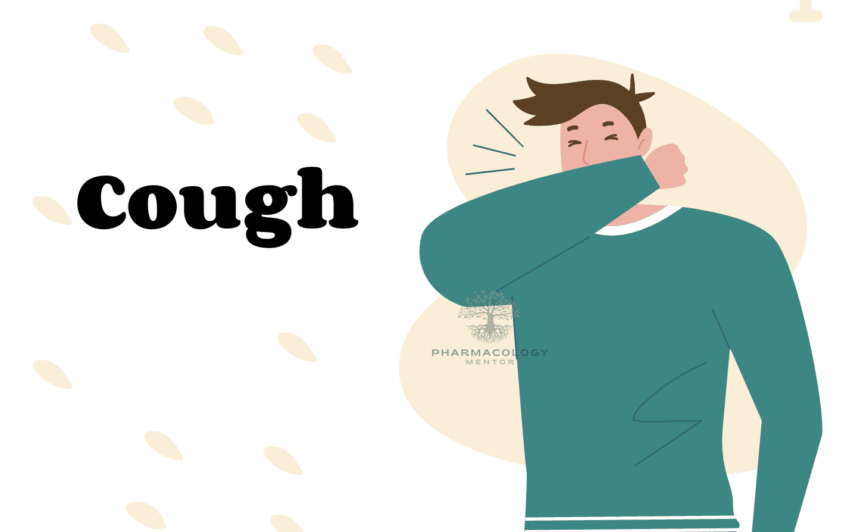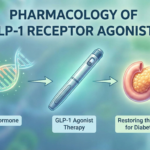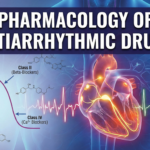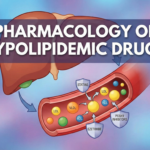Introduction
Cough—an involuntary, forceful expulsion of air from the lungs—is one of the most frequent symptoms leading to medical consultation. As a physiologic reflex, cough serves as the body’s first line of defense against respiratory tract infection, foreign bodies, mucus, and irritants. Despite its protective role, chronic or severe cough substantially impairs quality of life, causing disturbed sleep, fatigue, hoarseness, pain, and even syncope or rib fractures in extreme cases.
Pharmacologic management of cough is tailored both to the nature of the cough and its underlining etiology, aiming not just at symptomatic relief, but conscientious treatment of the root cause wherever feasible. This review provides a systematic, evidence-based overview of the pharmacology of cough, integrating key textbook and guideline insights, recent trials, and clinical best practices.
Physiology and Classification of Cough
A full appreciation of the pharmacology of cough requires understanding the neurophysiology of the cough reflex and the spectrum of cough types.
Neurophysiology of the Cough Reflex
The process begins with stimulation of cough receptors—mechanical, chemical, or inflammatory—located within the pharynx, larynx, trachea, bronchi, and pleura. Activation of these receptors triggers afferent neural pathways (mainly via the vagus nerve), transmitting impulses to the cough center in the medulla. Here, efferent signals are sent to the glottis, diaphragm, and intercostal muscles, producing the distinctive cough motor pattern: a deep inspiration, closure of the glottis, compression of thoracic muscles, and explosive air expulsion.
Cough Classification
- By Duration
- Acute cough: <3 weeks. Most cases relate to viral upper respiratory tract infections (URTIs), acute bronchitis.
- Subacute cough: 3–8 weeks. Can follow infection; sometimes due to asthma or post-infectious hyper-reactivity.
- Chronic cough: >8 weeks. Suggests chronic respiratory or systemic disease (asthma, GERD, postnasal drip, COPD, ACE inhibitor therapy).
- By Sputum Production
- Dry/non-productive cough: No expectoration of sputum. Often viral, allergic, or neurogenic.
- Productive (wet) cough: Accompanied by expectoration of mucus. Typical for infections (bronchitis, pneumonia), COPD, bronchiectasis.
- Other Subtypes
- Nocturnal cough (often asthmatic or postnasal drip)
- Paroxysmal cough (pertussis, asthma)
- Psychogenic/habit cough
Overview of Pharmacologic Agents
Cough pharmacotherapy includes agents that suppress the cough reflex (antitussives), promote sputum clearance (expectorants, mucolytics), mitigate upper airway triggers (decongestants, antihistamines), or address underlying disease mechanisms (bronchodilators, corticosteroids, antibiotics, PPIs).
Table 1: Pharmacologic Classes and Examples
| Class | Main Mechanism | Key Example Drugs | Core Indication |
|---|---|---|---|
| Antitussives | Cough reflex suppression | Codeine, dextromethorphan, benzonatate | Dry/non-productive cough |
| Expectorants | ↑ Mucus hydration, clearance | Guaifenesin | Productive cough |
| Mucolytics | ↓ Mucus viscosity/thickness | N-acetylcysteine, carbocysteine, bromhexine | Viscid/mucoid sputum |
| Decongestants | Nasal vasoconstriction | Pseudoephedrine, phenylephrine | Postnasal drip, URI |
| Antihistamines | ↓ Histamine, mucus | Cetirizine, loratadine, diphenhydramine | Allergic cough, UACS |
| Bronchodilators | ↑ Airway diameter | Albuterol (salbutamol), ipratropium | Asthma, COPD |
| Steroids (ICS/Systemic) | ↓ Inflammation | Fluticasone, prednisolone | Asthma, bronchitis |
| PPIs/H2 Blockers | ↓ Gastric acid | Omeprazole, ranitidine | GERD-induced cough |
| Antibiotics | Pathogen eradication | Amoxicillin, azithromycin | Bacterial infection |
Detailed Pharmacology: Antitussives
Antitussives are intended to reduce the frequency and severity of dry, nonproductive cough as a symptomatic relief—especially when cough is debilitating or interferes with sleep. Antitussives should NOT be used for productive cough unless the benefits outweigh the risk of retained secretions.
I. Opioid Antitussives
Codeine is the prototypical opioid antitussive. At therapeutic doses, it binds μ-opioid receptors in the cough center (medulla), raising the threshold for cough initiation. Codeine is metabolized in the liver to morphine via CYP2D6; pharmacogenetic differences significantly affect efficacy and safety.
- Indications: Dry, severe cough (short-term only), contraindicated in children <12 years, patients with respiratory depression risk.
- Adverse Effects: Sedation, constipation, nausea, pruritus, respiratory depression (esp. pediatric/elderly), abuse/dependence risk.
- Clinical note: Should be avoided in children due to variable metabolism and risk of toxicity/death. Strict regulatory controls apply.
Hydrocodone, pholcodine, ethylmorphine: Other opioids used regionally; hydrocodone is more potent, reserved for exceptional refractory cough cases due to high dependence risk.
II. Non-opioid Central Antitussives
Dextromethorphan (DXM) is the most widely used non-opioid cough suppressant. It is a D-isomer of a codeine analog (levorphanol) without analgesic or addictive potential. Its antitussive activity is mediated via NMDA receptor antagonism and sigma-1 receptor stimulation, raising cough threshold.
- Indications: Most dry cough types; available OTC as solo or in combos.
- Adverse Effects: Rare at therapeutic doses—drowsiness, mild GI upset. At high doses, euphoria, hallucinations, “robotripping” (abuse risk).
- Drug Interactions: Dangerous with concurrent MAO inhibitors/SRIs (risk of serotonin syndrome).
Noscapine: Used as antitussive in some countries, not addictive, mild efficacy.
III. Peripheral/Local Antitussives
Benzonatate: Anesthetizes stretch receptors in the respiratory passages, lungs, and pleura, suppressing cough. Should be swallowed whole to avoid oro-pharyngeal anesthesia, risk of choking.
- Adverse Effects: Numbness, dizziness, GI upset, rare severe allergic reaction.
Demulcents (syrups, lozenges): Provide mechanical soothing via viscosity and mucosal coating.
Table 2: Key Features of Common Antitussive Agents
| Drug | Mechanism | Dose (Adult) | Key Side Effects | Pearls |
|---|---|---|---|---|
| Codeine | μ-opioid, central | 10–20 mg q4-6h PO | Sedation, nausea, dependence, constipation | Rx only, peds risk |
| Hydrocodone | μ-opioid, central | 5–10 mg q4-6h PO | Same as codeine, higher risk | Strict controls |
| Dextromethorphan | NMDA block, central | 10–20 mg q4h PO | Drowsiness (low), abuse at high dose | OTC, safe if used properly |
| Benzonatate | Local anesthetic | 100–200 mg tid PO | Numbness, aspiration risk | Swallow whole; not for children |
Clinical note: Central antitussives can cause respiratory depression, particularly when combined with other CNS depressants—counsel patients regarding risk and interactions.
Detailed Pharmacology: Expectorants & Mucolytics
Expectorants promote sputum clearance by increasing airway water content (osmosis) and reducing mucus viscosity.
I. Guaifenesin
- Most common expectorant, increases respiratory tract fluid, reduces mucus thickness.
- Indications: Acute productive cough, bronchitis, mild chronic chest congestion.
- Adverse Effects: Low—GI upset, nausea.
- Combinations: Widely found in OTC cough/cold mixtures (may include DXM, antihistamines, pseudoephedrine).
II. Mucolytics
N-acetylcysteine (NAC) breaks disulfide bonds in mucoproteins, directly liquefying viscous sputum. Also serves as a glutathione precursor (used in acetaminophen toxicity).
- Indications: Chronic bronchitis, bronchiectasis, cystic fibrosis, COPD with viscous sputum.
- Adverse Effects: Rare—bronchospasm, GI irritation.
Carbocysteine, bromhexine, ambroxol: Regional mucolytics, similar action/profiles.
Pearl: Empirical evidence for expectorant and mucolytic efficacy in routine acute viral cough is limited; best results seen in patients with chronic lung disease.
Table 3: Features of Expectorants vs. Mucolytics
| Property | Expectorant (Guaifenesin) | Mucolytic (NAC, carbocysteine) |
|---|---|---|
| Mechanism | ↑ Secretion hydration | ↓ Mucus viscosity |
| Main use | Acute productive cough | Chronic thick/tenacious sputum |
| Other info | OTC combos | Rx, sometimes inhaled |
Clinical note: Adequate hydration should be encouraged with all expectorant/mucolytic therapy.
Decongestants and Antihistamines
Decongestants
Pseudoephedrine, phenylephrine act as α-adrenergic agonists, constricting nasal mucosal blood vessels, reducing edema and mucus production. Useful in cough related to postnasal drip, allergy, or sinusitis.
- Adverse Effects: Hypertension, insomnia, anxiety, tachycardia. Not recommended for children or patients with cardiovascular disease.
Antihistamines
First-generation antihistamines (diphenhydramine, chlorpheniramine) offer both sedative and antitussive effects; they dry secretions and may help suppress allergy-provoked cough. Second-generation antihistamines (cetirizine, loratadine) have minimal sedating effects, best for pure allergic cough.
- Adverse Effects: Drowsiness, anticholinergic side-effects; caution in older adults.
Clinical note: Combo products often leverage mild antihistamine antitussive effect, though evidence is stronger for allergy-driven cough.
Bronchodilators and Steroids
Bronchodilators
Beta-agonists (e.g., salbutamol) and anticholinergics (ipratropium) dilate bronchial airways—most useful in asthma, COPD, acute or chronic bronchitis with airway hyperreactivity or bronchospasm.
- Adverse Effects: Tremor, palpitations, insomnia, tachycardia.
Steroids
Inhaled and systemic corticosteroids (fluticasone, budesonide, prednisolone) reduce airway inflammation in asthma, COPD, and hypereosinophilic states, decreasing cough reflex sensitivity.
- Adverse Effects: Oral thrush (inhaled), metabolic changes (systemic), infection risk.
Other Treatments
GERD-Associated Cough
Proton pump inhibitors (omeprazole, lansoprazole) and H2 blockers are effective when cough is secondary to gastroesophageal and laryngeal reflux. Lifestyle changes (weight loss, diet, head-of-bed elevation) essential adjuncts.
Antibiotics
Only indicated in cough with established bacterial etiology—community-acquired pneumonia, chronic bronchitis exacerbations, pertussis.
- Risks: Resistance, GI upset, allergic reactions.
Neuromodulators
In recalcitrant chronic cough (e.g., post-viral, idiopathic), neuromodulators (gabapentin, pregabalin, amitriptyline) may reduce cough reflex hypersensitivity, though evidence is evolving.
Special Considerations in Cough Pharmacotherapy
Children: Antitussives, especially opioids, are not recommended in pediatric practice due to high risk of respiratory depression, poor efficacy, potential toxicity. Expectorants and mucolytics are also unsupported by good evidence in acute cough. OTC cough/cold medications pose dose-error toxicity risk.
Elderly: Increased risk of drug interactions, anticholinergic and sedative adverse effects. Careful medication review warranted.
Pregnant/Lactating Women: Use only when benefits outweigh risks; prefer non-pharmacological measures.
Drug Interactions: CNS depressants (opioids + alcohol/benzodiazepines), serotonergic agents (DXM + SRIs/MAOIs), sympathomimetics (decongestants + antihypertensives).
Duration: Use agents at lowest effective dose and duration. Chronic cough needs full workup, not just symptomatic suppression.
Non-Pharmacological Measures:
- Air humidification (steam inhalation, humidifier)
- Hydration (water promotes mucus clearance)
- Throat soothing agents (lozenges, syrups)
- Avoidance of triggers (smoke, strong odours, cold air)
Drug Tables: Indications, Dosages, and Adverse Effects
Table 4: Cough Drugs Reference Table
| Drug/Class | Typical Dose (Adult) | Indication | Key Side Effects | Contraindications |
|---|---|---|---|---|
| Codeine | 10-20 mg q4-6h PO | Dry/severe cough | Sedation, constipation | <12 y/o, resp. disease |
| Dextromethorphan | 10-20 mg q4h PO | Dry cough | Drowsiness, rare abuse | MAOI use, <6 y/o |
| Guaifenesin | 200-400 mg q4h PO | Productive cough | GI upset | <2 y/o |
| N-acetylcysteine | 200-600 mg tid PO/inhaled | Thick mucus | Bronchospasm, nausea | Chronic asthma |
| Pseudoephedrine | 60 mg q4-6h PO | Postnasal drip cough | Insomnia, BP ↑, anxiety | Cardiovascular disease |
| Diphenhydramine | 25-50 mg q6h PO | Allergy/irritant cough | Sedation, dry mouth | Glaucoma, prostate |
Summary Algorithm: Rational Approach to Cough
- History & Examination: Define duration, nature, triggers; screen for alarm signs.
- Determine underlying cause: Treat cause if possible—eg. asthma, infection, reflux.
- Symptomatic relief:
- Acute dry: Dextromethorphan or short course codeine; hydration, lozenges.
- Acute productive: Guaifenesin, mucolytics if thick; drink water.
- Chronic/allergic: Antihistamine, nasal steroids, treat allergy.
- Asthma/COPD: Bronchodilator, inhaled corticosteroids.
- GERD: PPI, lifestyle changes.
- Bacterial infection: Treat with appropriate antibiotics.
- Refractory/idiopathic: Specialist referral, neuromodulators.
- Monitor for efficacy and adverse effects.
- Educate: Risks with misuse, especially OTC combos, and highlight supportive care.
Future Directions
Active research continues in targeted antitussives (e.g., ATP/P2X receptor antagonists; nociceptin/orphanin FQ), neuromodulation, and personalized cough management. The evidence-based use of cough medicines in children is evolving—guidelines increasingly emphasize non-pharmacological management.
Conclusion
Pharmacotherapy of cough is nuanced, demanding both scientific precision and clinical sensitivity to patient age, etiology, comorbidities, and risk factors. No medication substitutes for careful assessment and diagnosis. Used judiciously, antitussives, expectorants, mucolytics, and adjunctive agents can enhance comfort and restore quality of life—but their optimal use depends on the thoughtful application of pharmacologic and clinical knowledge. Always combine pharmacologic management with non-drug supportive measures, regular monitoring, and patient/caregiver education for best outcomes.
References
- Goodman & Gilman’s The Pharmacological Basis of Therapeutics, 13th Edition
- Katzung BG, Basic & Clinical Pharmacology, 15th Edition
- Rang & Dale’s Pharmacology, 9th Edition
- BMJ Clinical Review: Cough Pharmacology
- Cambridge Textbook: Drugs for the Treatment of Respiratory Diseases
- ScienceDirect Review Article: Pharmacologic Therapy for Cough
- GoodRx, WithPower: Expectorant vs Mucolytic Comparison
- JAMA, NEJM: Clinical guidelines on cough management.
- FDA, WHO, and National Guideline Clearinghouse for pediatric/geriatric safety recommendations.
📚 AI Pharma Quiz Generator
🎉 Quiz Results
Medical Disclaimer
The medical information on this post is for general educational purposes only and is provided by Pharmacology Mentor. While we strive to keep content current and accurate, Pharmacology Mentor makes no representations or warranties, express or implied, regarding the completeness, accuracy, reliability, suitability, or availability of the post, the website, or any information, products, services, or related graphics for any purpose. This content is not a substitute for professional medical advice, diagnosis, or treatment; always seek the advice of your physician or other qualified health provider with any questions you may have regarding a medical condition and never disregard or delay seeking professional advice because of something you have read here. Reliance on any information provided is solely at your own risk.









